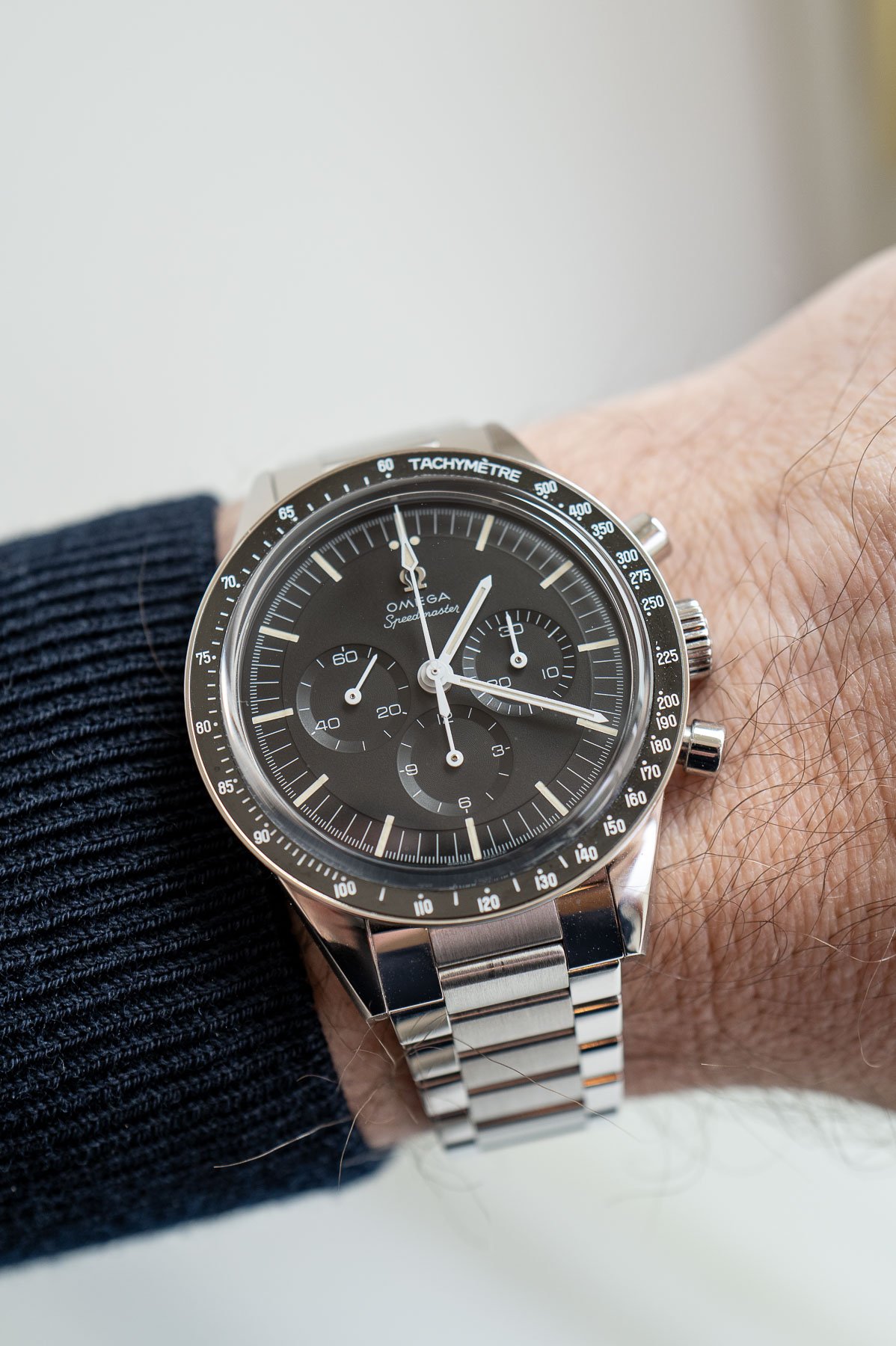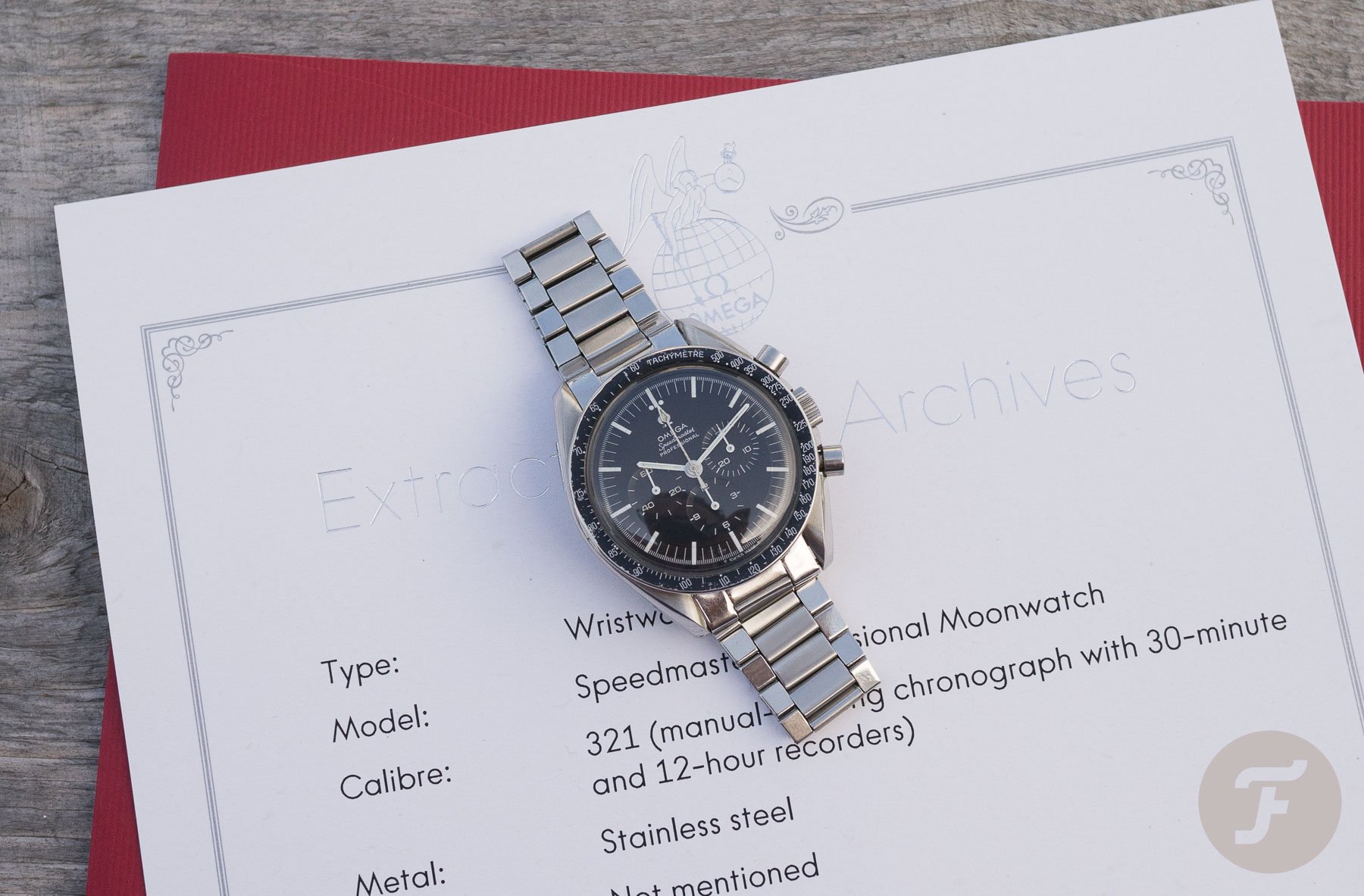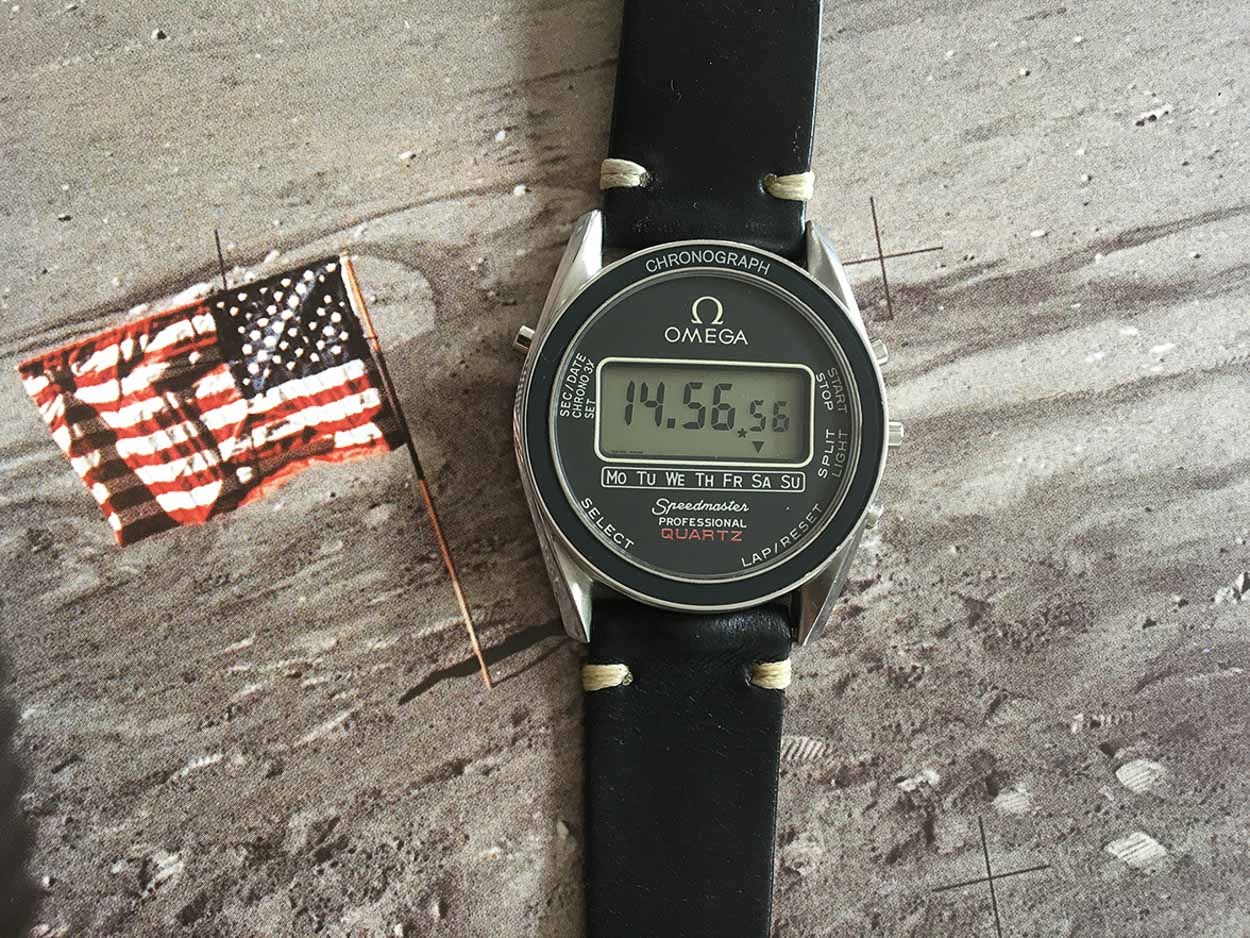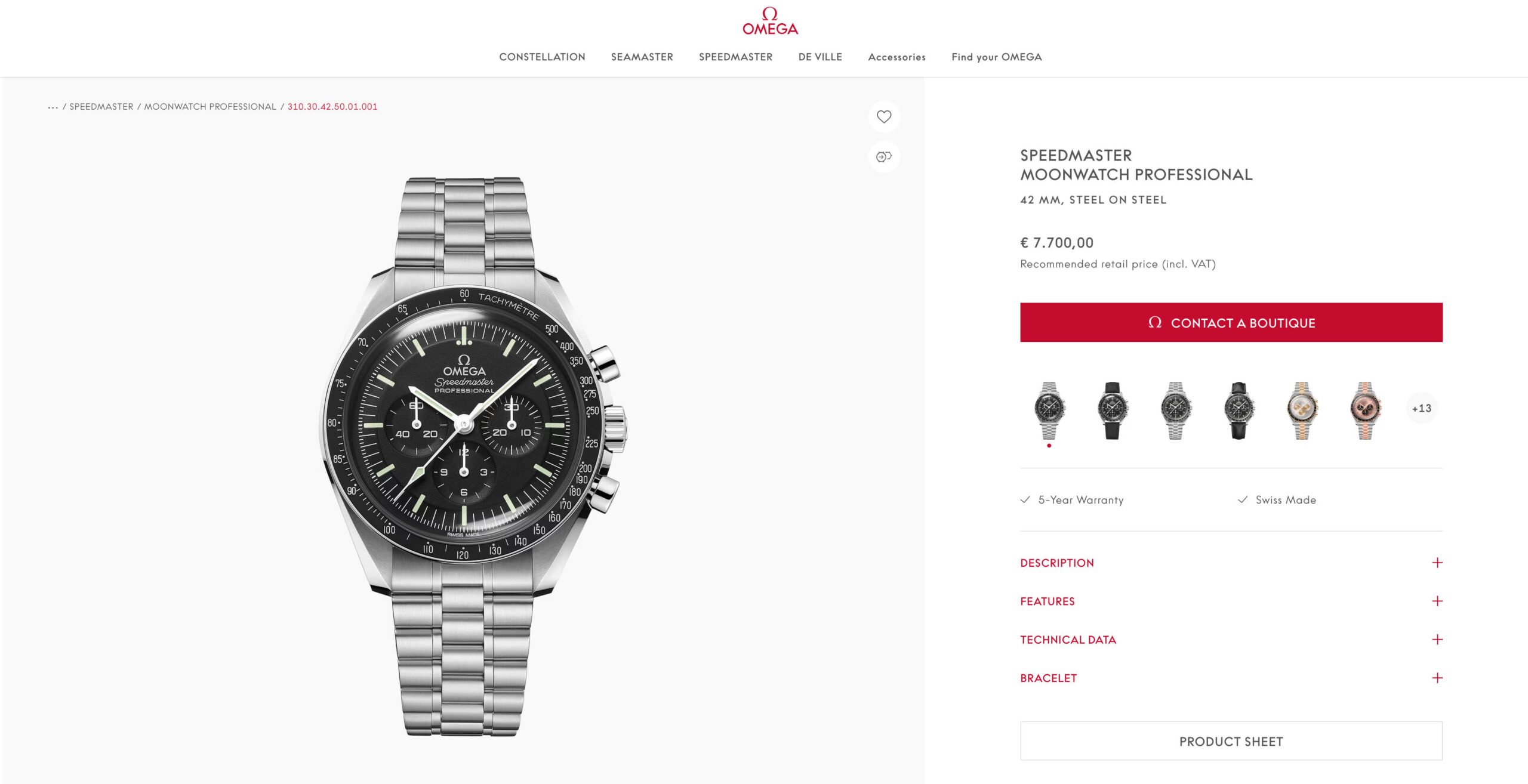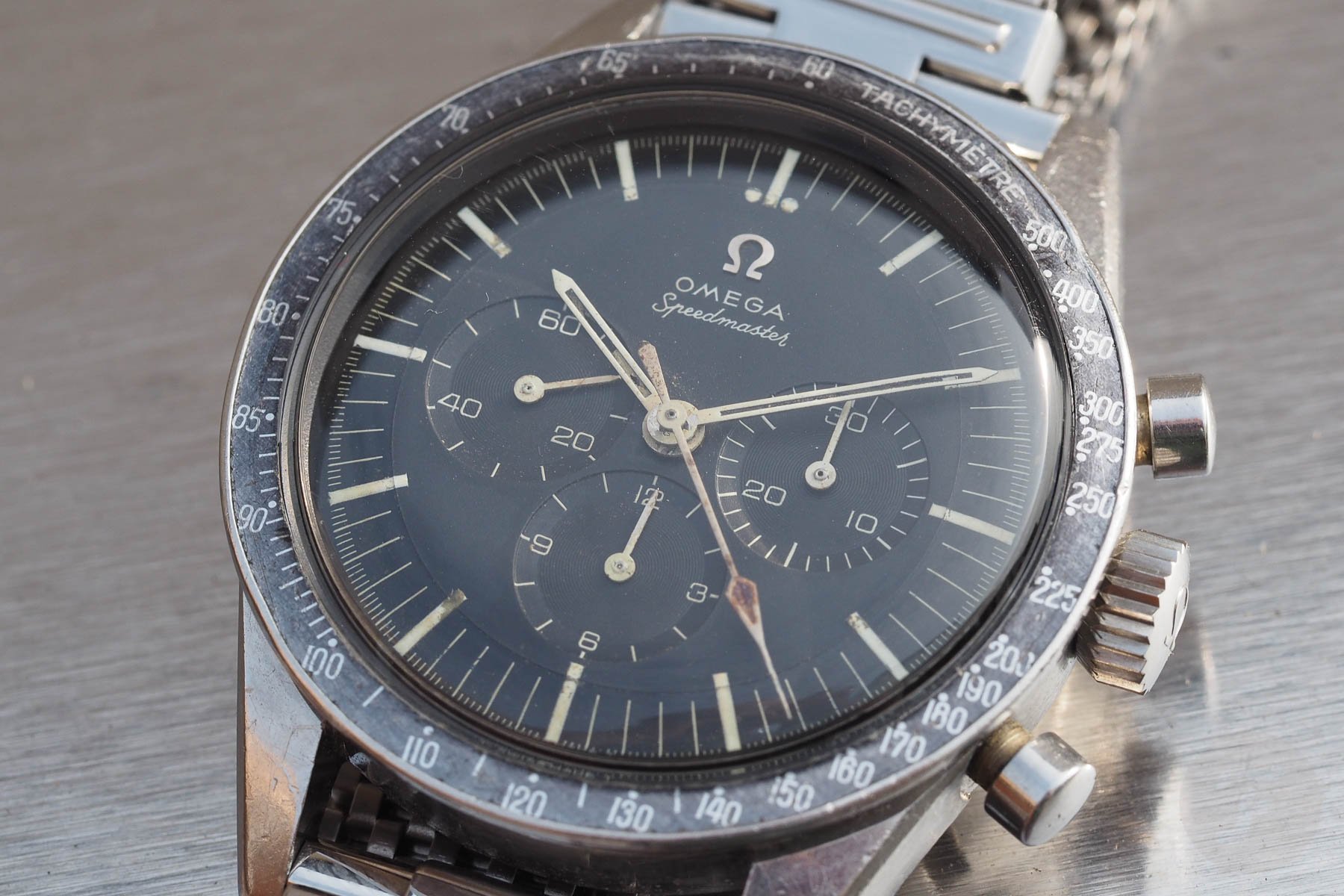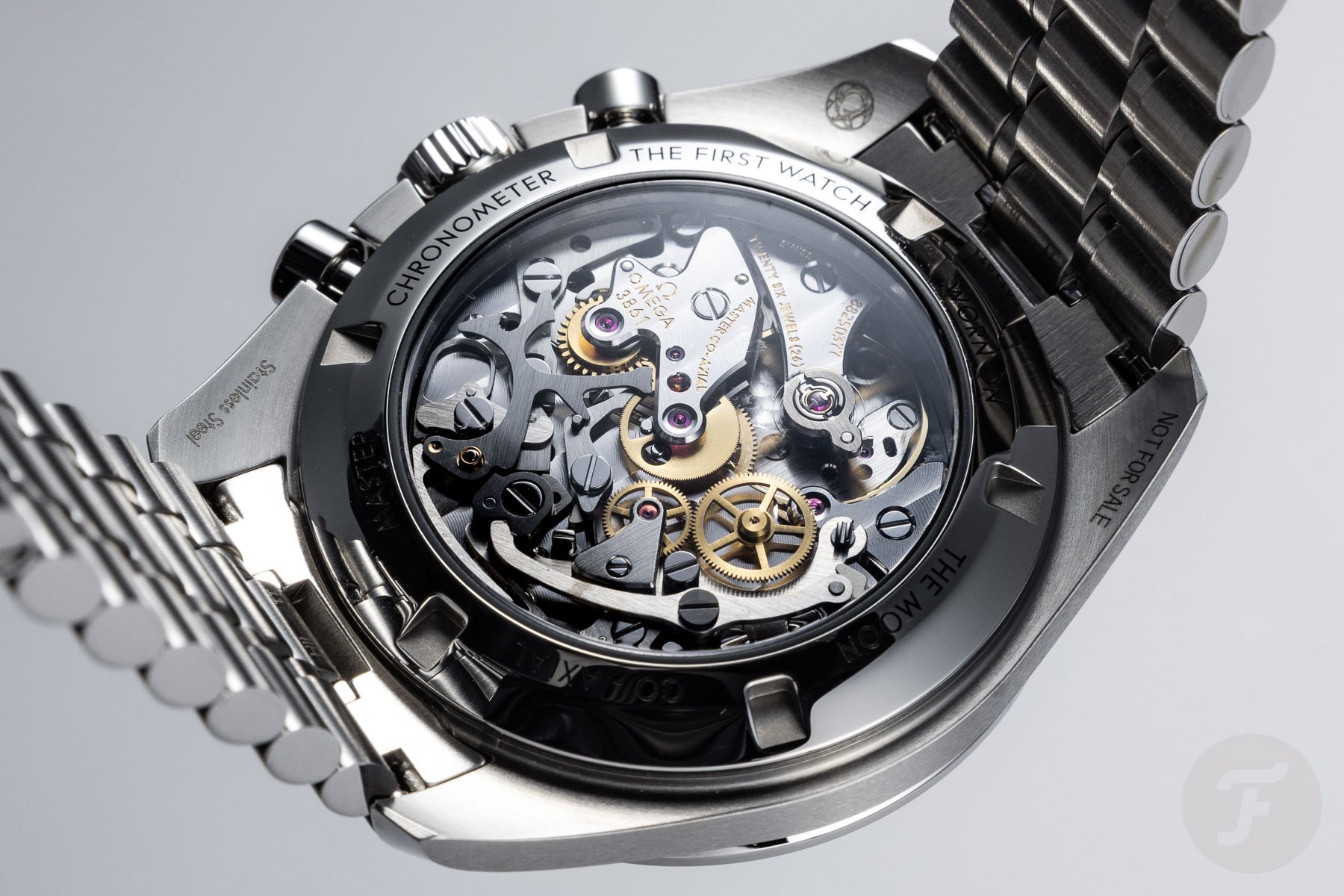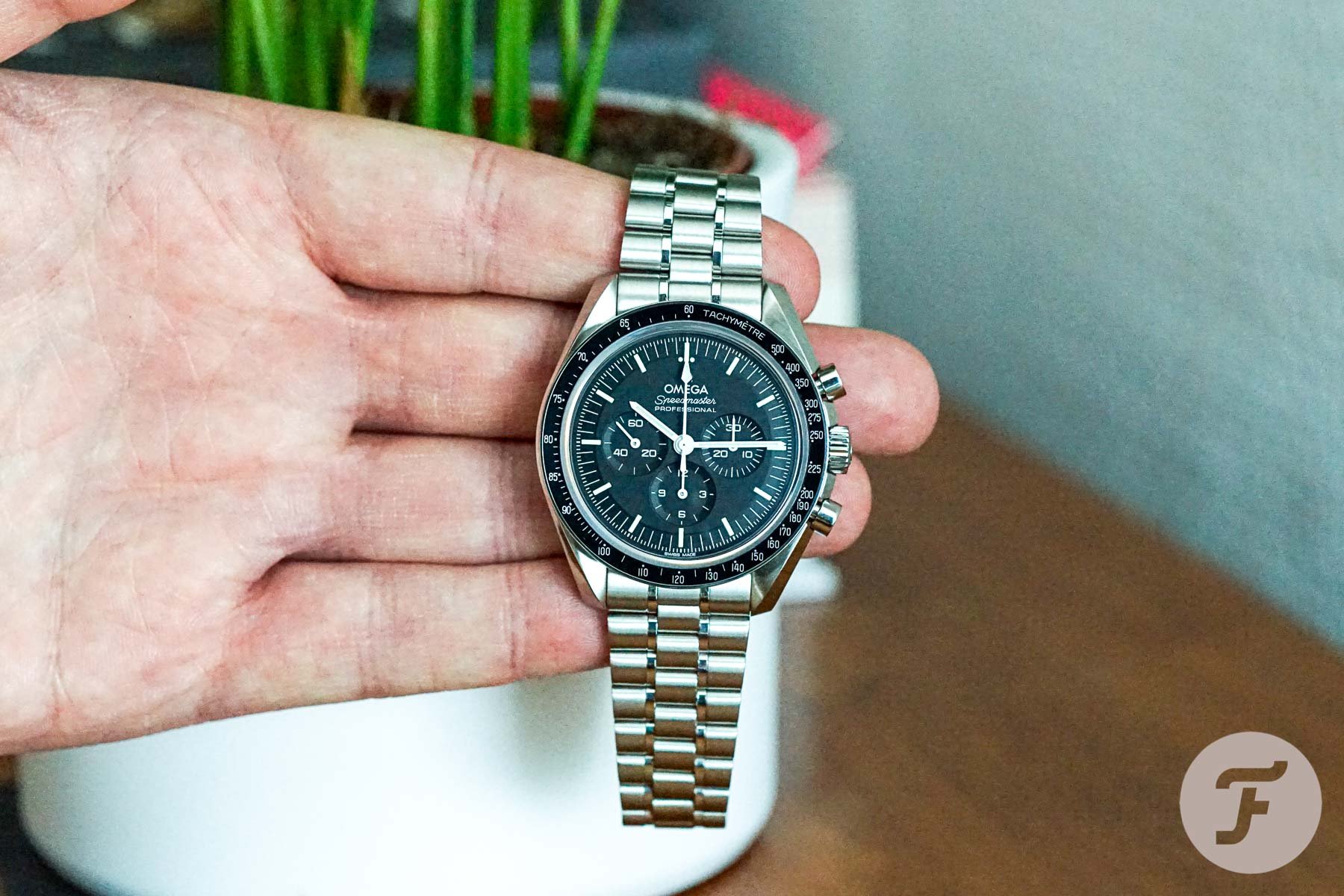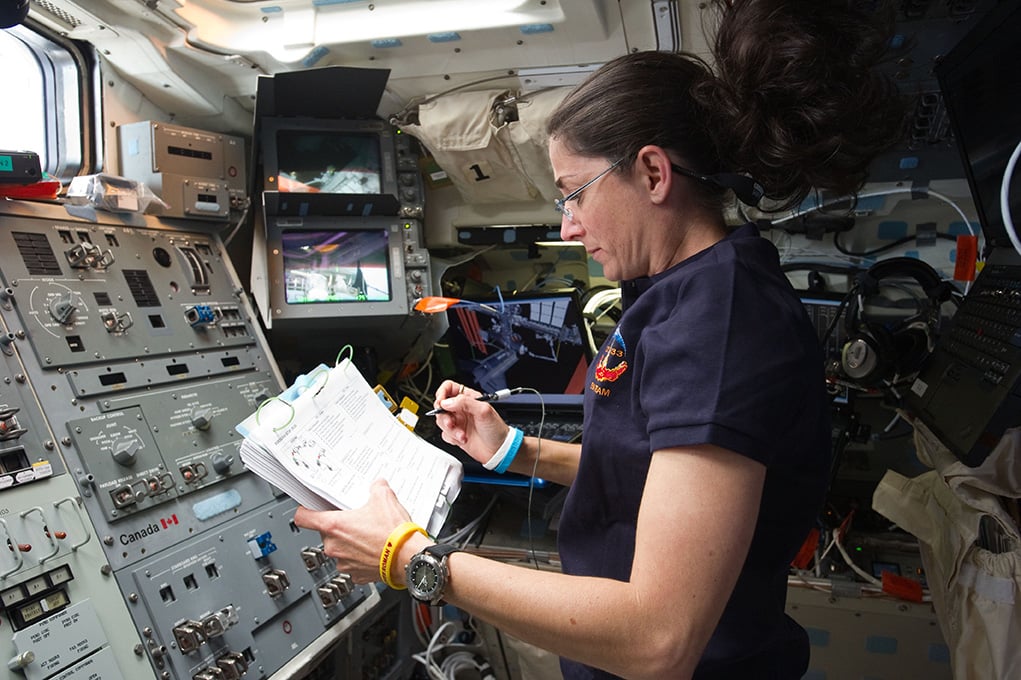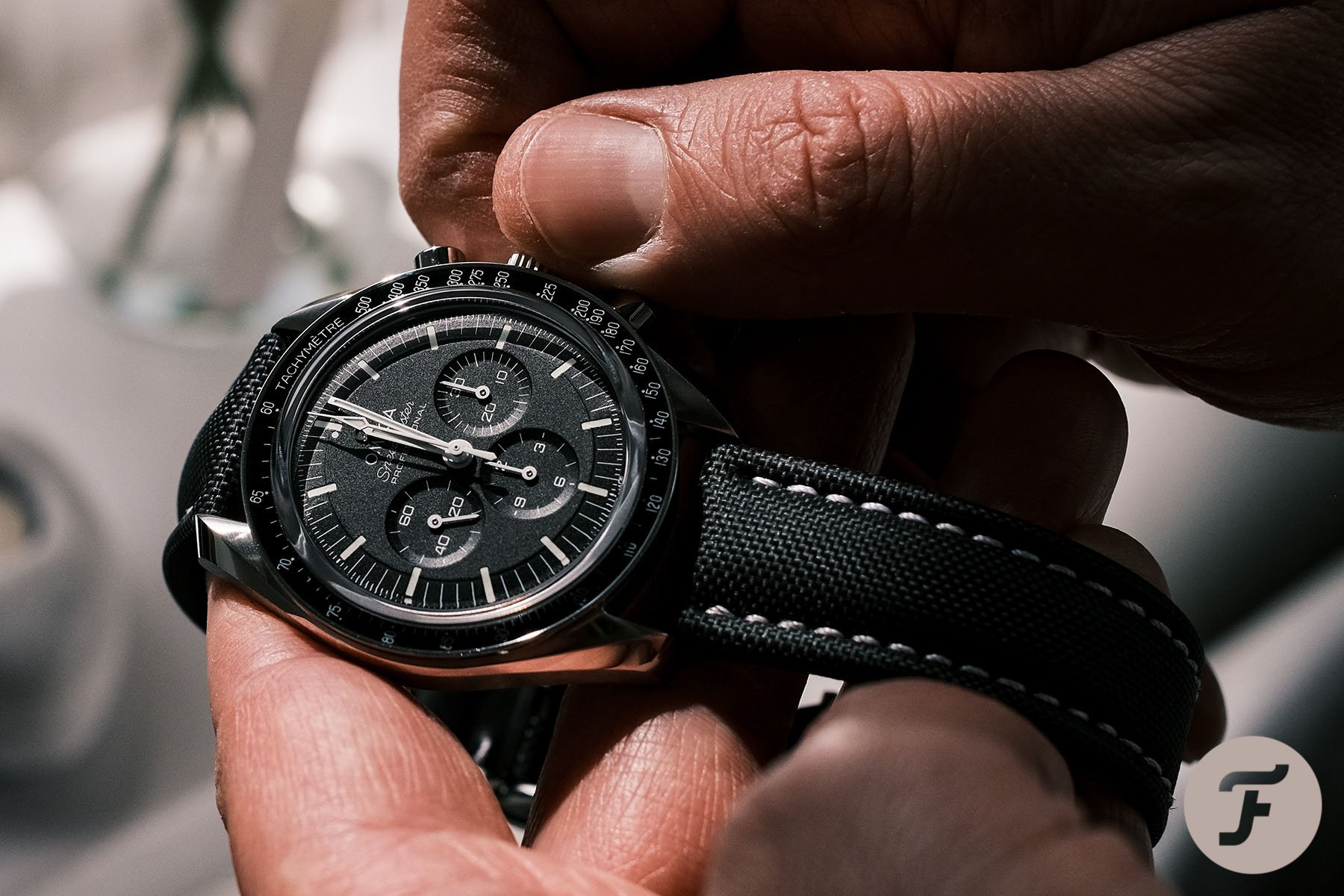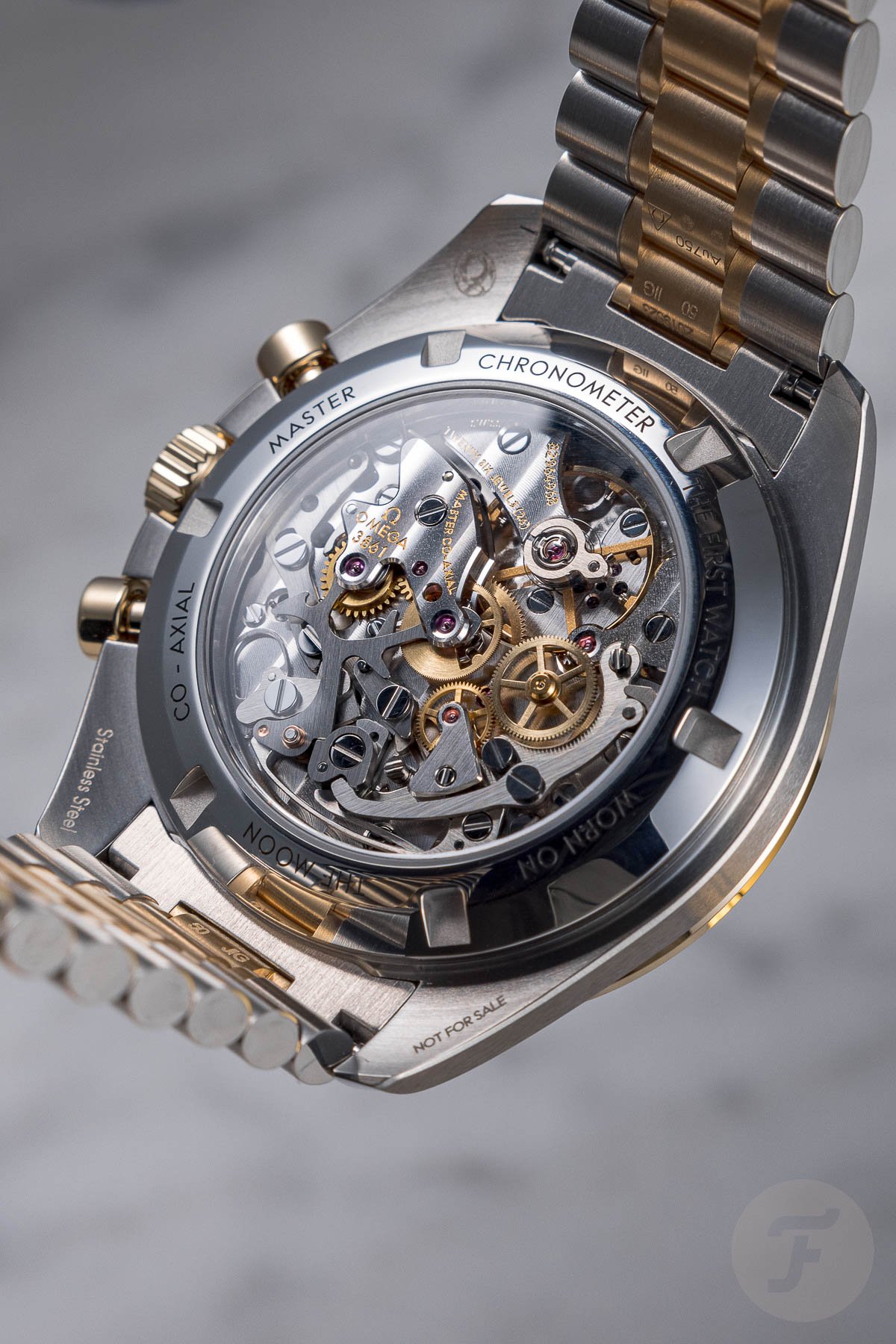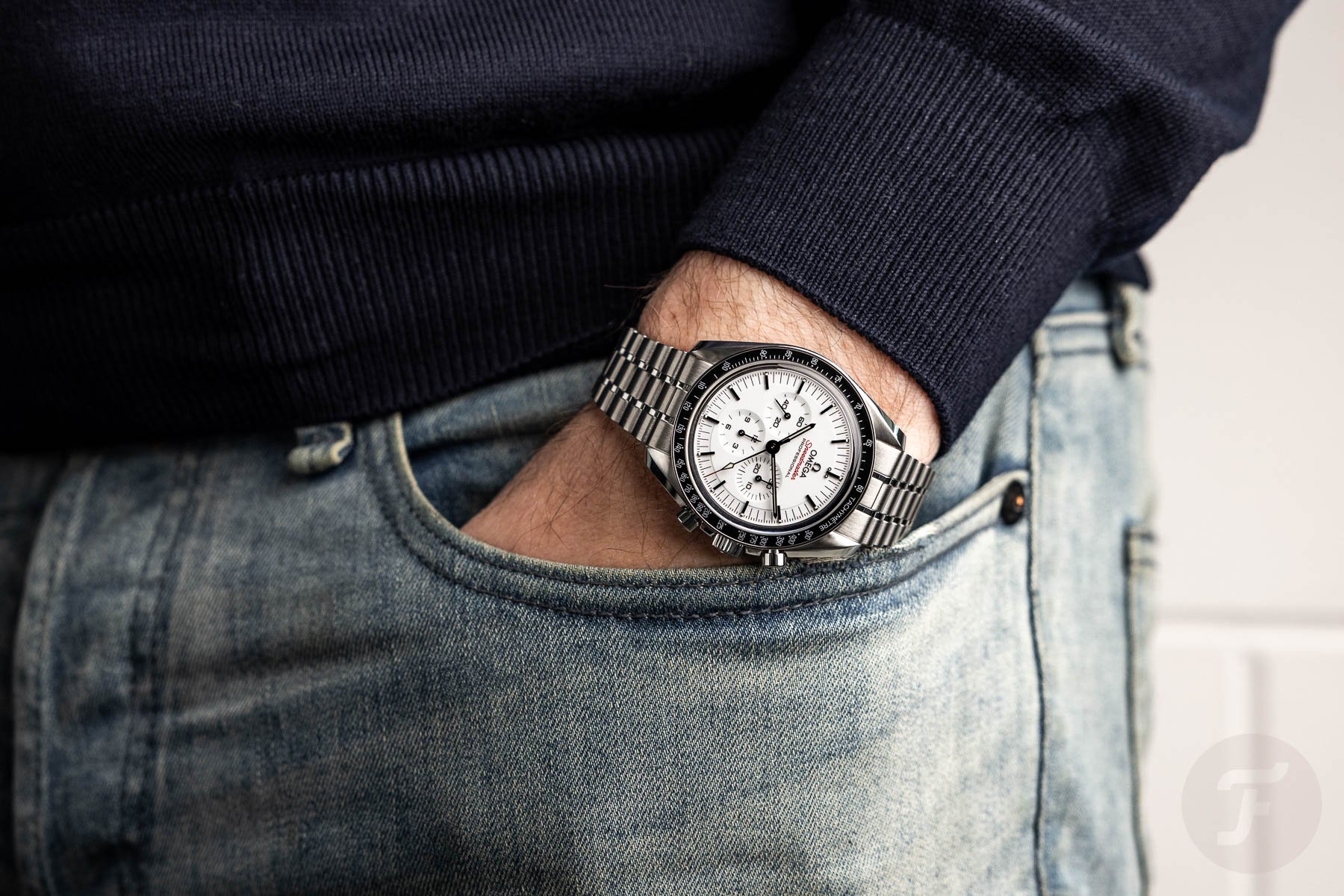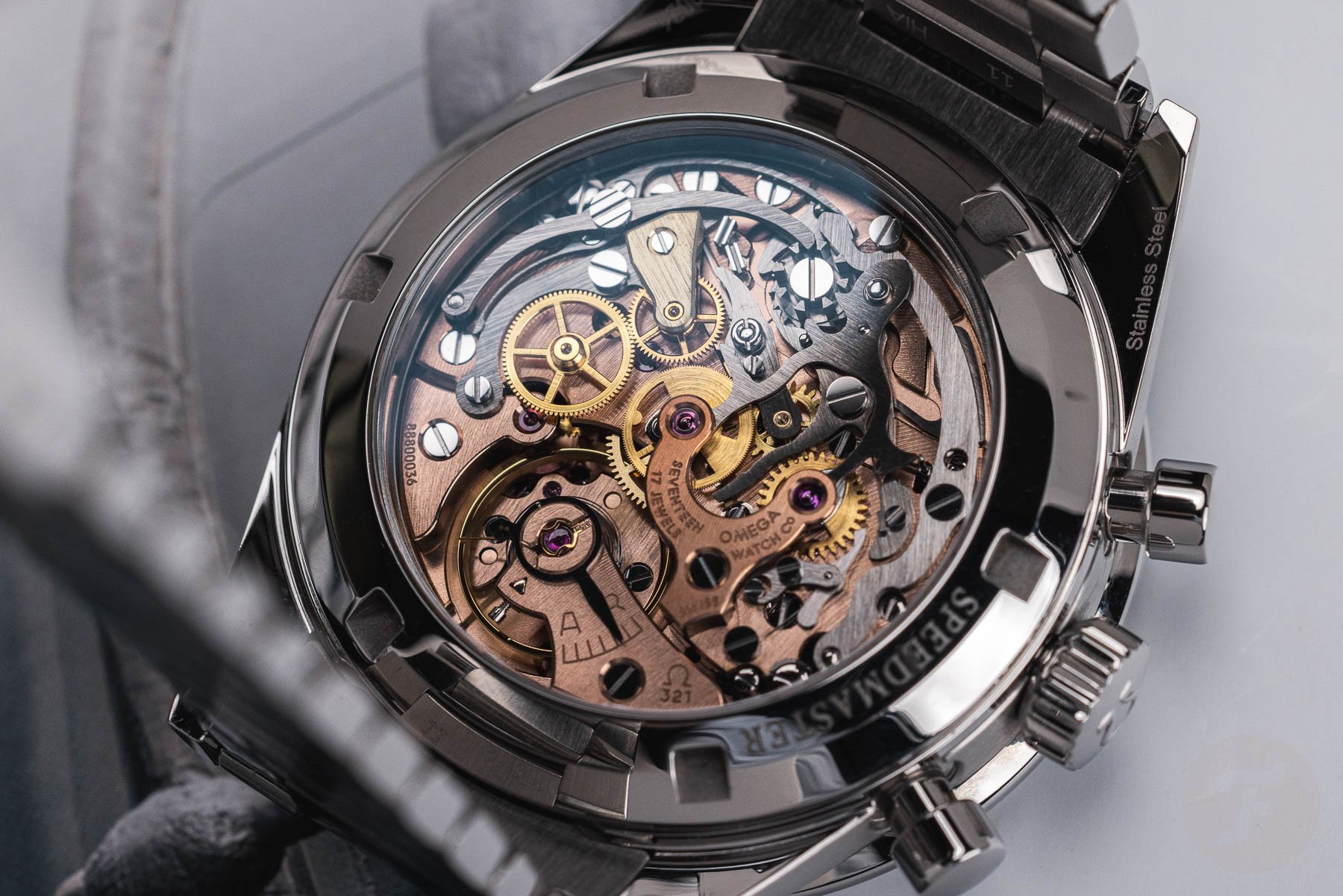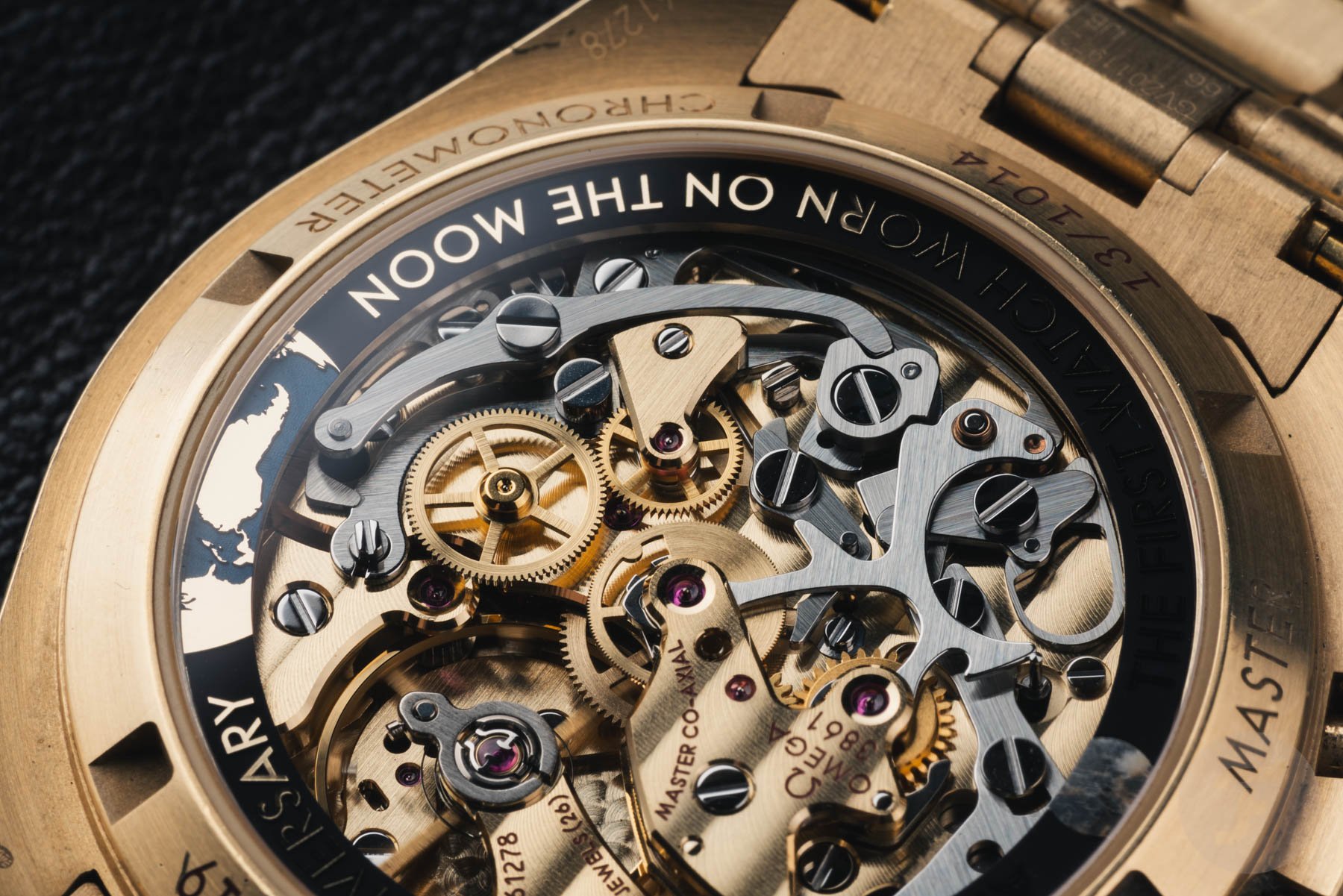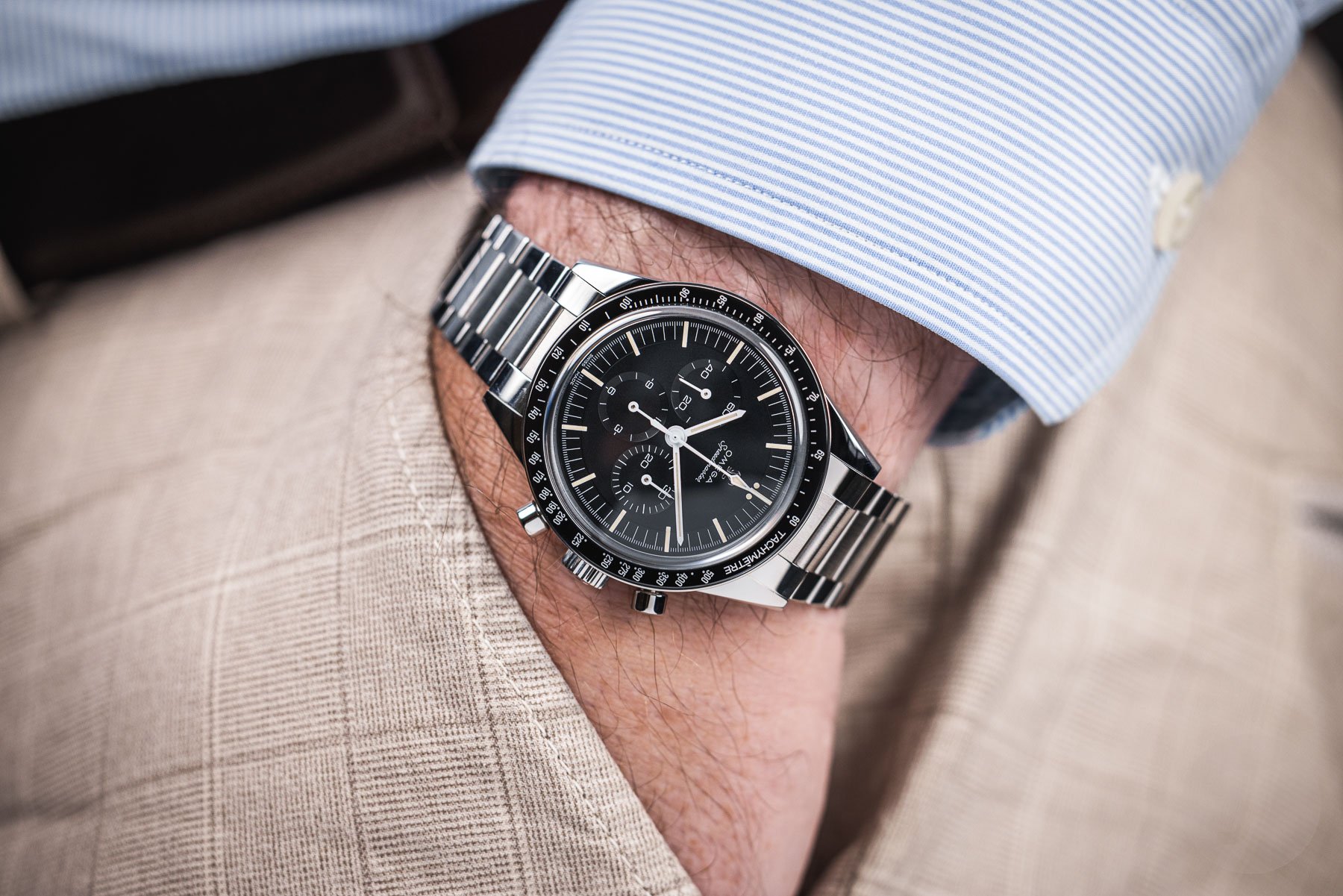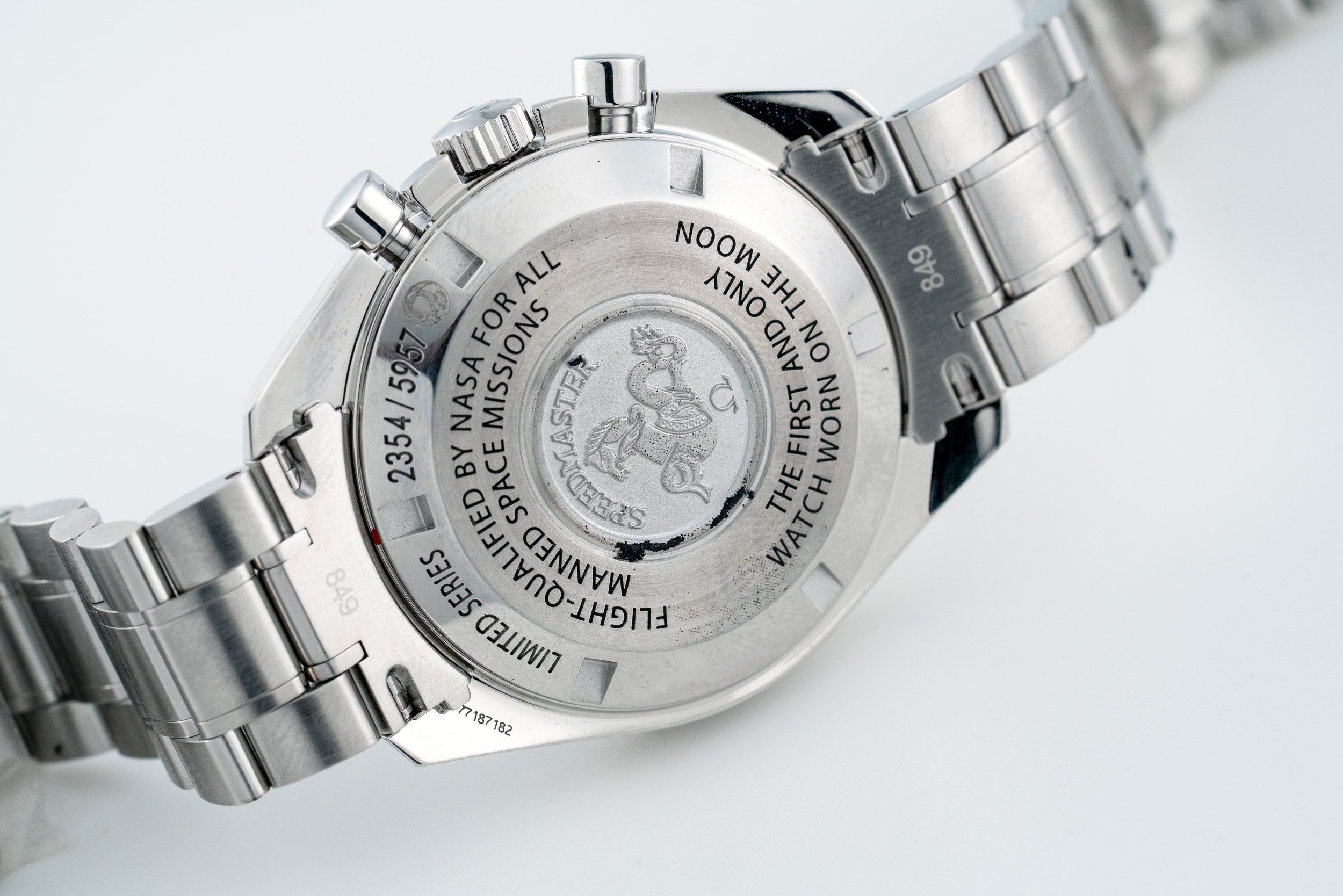Can I Swim With My Omega Speedmaster Professional?
Every once in a while, we see comments and questions on the Speedmaster that need to be addressed. One of them is about the water resistance of the Speedmaster. It’s often mocked for the lack of water resistance, but what many don’t seem to know is that, according to Omega, it’s safe to swim while wearing the current Speedmaster Professional with caliber 3861.
We’ve covered the iconic Speedmaster nearly every (Speedy) Tuesday since 2012. But Fratello goes back to July 2004, and between then and 2012, the Speedmaster was a recurring topic as well. This resulted in receiving a lot of questions about the Moonwatch and all of its variations. For this article, we have selected the most frequently asked Speedmaster questions and will answer them to the best of our knowledge.
As you might imagine, we receive several messages from our readers with Speedmaster questions. We get everything from the most common “What model should I start with?” to more in-depth questions regarding the type of bracelets, movement iterations, and dial versions. If you’re a die-hard Speedmaster fan, you might not find the following answers surprising. However, I do hope you will still pick up a fact or two that you didn’t know before.
1. What Speedmaster should I buy?
The most common question we receive is about what Speedmaster you should buy. That’s a difficult one to answer without knowing who you are. My first Speedmaster Professional was a vintage reference 145.012-67 from 1968. I purchased it in 1999 and still have it in my collection today. At that time, there wasn’t as much information on the Omega Speedmaster Moonwatch as today. Honestly, I was more interested in a more modern Speedy Pro with caliber 861 or 1861, but those were pricier than a vintage one. Such a thing is unthinkable in today’s market.
In hindsight, I am very happy that I went for the 145.012-67 with caliber 321. Or rather, I’m glad I had to go for caliber 321 because my budget didn’t give me any other choice. In general, I suggest always going for the Moonwatch with a hand-wound movement. Whether that’s a new Speedmaster Professional Master Chronometer or one of the previous references is less relevant. However, there are many more Speedmasters to choose from.
Collecting theme
Try to find out what you are after when building up a collection. Is it the Moonwatch only? Or do you want to go after the quirky stuff, like a Speedmaster Speedsonic f300hz, Speedmaster LCD, or X-33? What about a Mark III or Mark V? Do you want to go vintage or only modern? These are things that I can’t answer for you; you have to discover them yourself. What makes your heart beat faster? You will eventually find out by reading extensively about Speedmasters. Also, make sure to try on some different models.
2. How much should I pay for an Omega Speedmaster?
For a while now, Omega has shown the prices of its watches on the official website. Depending on the country you are in, you can see the actual retail price of your watch. That’s also the price you can expect to pay at Omega boutiques. Besides these boutiques, you will also find Omega watches for sale at authorized dealers worldwide. Unlike Omega boutiques, you may be given a discount on a Speedmaster at one of the authorized dealers. It also depends on the model, your relationship with the authorized dealer, and whether you purchased things there in the past. Don’t expect miracles on the Speedmaster Professional, though.
For pre-owned Omega Speedmasters, prices are a different ballgame. It heavily depends on the model or reference and the demand and supply of these models. For pre-owned and vintage Speedmasters, the condition of the watch is incredibly important. A vintage 1970s Speedmaster Professional can be found for about €5,000, but it would also not be unheard of to find one for more than twice that amount. It all depends on the watch’s condition. Always do your homework and use Chrono24 to indicate prices, or use the price chart from Speedmaster101 to get an easy overview per reference number. Speedmaster101 also updates its Speedmaster price chart regularly.
And what about a vintage Speedmaster?
My tip for buying pre-owned or vintage is this: buy the best you can afford with your budget! I would rather overpay for a perfect 105.012 or 145.012 than buy the cheapest 105.003 in poor condition. A vintage Speedmaster in good condition also increases your pleasure in wearing and owning the watch.
Are you starting with pre-owned Speedmasters? Try a Moonwatch 3590.50 or 3592.50 from the early 1990s with a tritium dial and hands, a reference 1479 bracelet, and a box and papers. They look amazing with their beautiful yellowish patina, use one of the best bracelets Omega ever made for the Speedmaster, and are relatively easy to find with boxes and papers.
3. How often should a Speedmaster be serviced?
Normally, I would recommend a seven-year interval for having a Speedmaster Professional serviced, whether a vintage reference or the latest model with the Master Chronometer movement. If you wear the same watch daily, you might want to have it serviced more often. If it is part of a collection and not an everyday watch, you can increase the service interval slightly.
Perhaps more interesting is how much a Speedmaster service will cost you and where you should have it serviced. Omega has several service centers (including at its HQ in Bienne), and the brand will charge €950 for a full service of a Speedmaster in steel. Omega is very transparent about the cost of service, which is openly published on the brand’s website here.
A complete service on a gold or platinum Speedmaster will cost €1,150. This includes disassembling the entire watch and cleaning all components. It also includes replacing or overhauling all worn parts in the movement. For vintage watches, ask for the special service form at the boutique. On it, you can indicate what you want to have done and, more importantly, what should be left untouched.
You can argue that this is a lot of money. However, not only is the service done to Omega’s high standards, but all worn-out parts will also be replaced. This includes the crown, tubes, pushers, gears, Hesalite crystal, hands (if necessary), etc.
From a watchmaker’s perspective
We asked our watchmaker Paul (@paul_divawatchmaker), who works independently for several boutiques and shops. He told us that the €950 for the overhaul at Omega isn’t that expensive considering that the brand replaces everything worn.
That said, finding a skilled watchmaker should be at the top of your list when starting to build a Speedmaster collection. It’s not that the watches often break, but you want a reliable contact for these service overhauls and someone you can truly trust with your precious Speedmaster.
4. Can you take your Speedmaster swimming?
It would seem that this is quite a recurring question and topic of discussion for many of you. It is also a popular subject for countless Speedmaster memes out there. Most of the time, people assume it isn’t water-resistant at all. Since 1957, Omega’s Speedmaster has had the Hippocampus logo (which we explained here) on the case back. Although it indicated water resistance in the past, today’s standards are quite different.
Though it may be clear that the Speedmaster is not suitable for diving purposes, it is often not so clear that you can take your new Speedmaster for a swim. The Speedmaster Professional Moonwatch has a 50m water resistance rating, which is suitable for use in water. Take note, however, that you shouldn’t operate the pushers or crown underwater. We’ve checked this officially with Omega, and the brand also informed us that the watches are tested for water resistance with a substantial margin (+10%). All Master Chronometer watches are water tested, including the hand-wound Moonwatch models.
Also — and this is very important — only do this if you are confident that the gaskets are still in good shape. If you use the Speedmaster in the water, replace the gaskets every 12 months. Some Speedmasters have more excellent water resistance, such as the Speedmaster Co-Axial Master Chronometer Moonphase models. These are water resistant to 100 meters.
I wouldn’t recommend swimming with the older/vintage Speedmaster models with only a 30m rating. Even if they are pristine and have been recently serviced, you’re better off keeping them out of the water.
5. Is the Speedmaster still being used by astronauts?
A very common question that we receive is about astronauts using the Omega Speedmaster or if NASA still issues the watch to them. The answer to this is that all astronauts who are going into space via Russia (including NASA and ESA astronauts) receive a Speedmaster Moonwatch as well as the digital X-33. Of course, you will see a lot of different watches on the wrist of astronauts in space. Some prefer their private watches or have a connection with a brand other than Omega. However, the only watch that NASA ever qualified for manned space missions is the Omega Speedmaster. In recent space endeavors, such as the launch of the SpaceX Falcon 9 or even the Blue Origin New Shepard project, you could see the Speedmaster in action. In short, yes, the Speedmaster is still being used by astronauts today. Even the Speedmaster Silver Snoopy Award 50th Anniversary made it into space.
6. How often should I wind my Omega Speedmaster (Professional)?
Through the years, the Speedmaster Professional (and pre-Professional) models have used Omega’s hand-wound calibers 321, 861, 863, 864, 866, 1861, 1863, 1866, and 3861. And let’s not forget about the beautiful hand-wound caliber 3201 (F. Piguet base) used in the 2007 enamel-dialed Speedmaster made to commemorate the 50th anniversary of the watch. Depending on the caliber, these watches have a power reserve of between 48 and 52 hours. You only need to wind them when they are almost out of power, but if you prefer to do so every morning, that’s fine as well. What you shouldn’t do is wind them while they are on your wrist. This can cause unnecessary tension on the winding stem and the movement.
7. How accurate is the Omega Speedmaster?
This is another one of the most asked Speedmaster questions because, until recently, the Moonwatch was not a chronometer-certified watch. Thus, the answer depends on the movement inside. Omega used an average tolerance of +11/-1 seconds per day for a non-chronometer chronograph with mechanical movement. This would be fine by me, but your watchmaker may be able to get it even more precise. If a Speedmaster is more than 10 seconds off per day, I would consider having it regulated.
A chronometer-certified Omega Speedmaster should be accurate to within +6/-4 seconds per day on average, which is the COSC standard. The performance might worsen over the years after the watch is first purchased or serviced. The current Speedmaster Professional Moonwatch is a Master Chronometer certified by METAS (and COSC). These caliber-3861-powered Speedmaster watches have an accuracy of +5/-0 seconds per day. The watches are also antimagnetic to 15,000 gauss.
8. Where should I buy an Omega Speedmaster?
You can buy directly from Omega via one of its boutiques or by ordering directly from Omegawatches.com. Other than that, the brand has a network of retailers where you will find a selection of the brand’s watches. If you want to buy a pre-owned Speedmaster, you can find many dealers and private sellers offering them. You will also find many listings of vintage and pre-owned Speedmasters on platforms like Chrono24.
You will also find offers in specific Facebook groups or on the Omegaforums.net platform, for example. These are places with knowledgeable people and a lot of enthusiasts, so their sales forums are more or less “self-regulating.” Always take into account that you might need to deal with customs, and if you buy pre-owned, make sure to calculate the cost of a service into your budget or make sure the seller can provide paperwork for all recent service work. Remember, always make sure to do your homework. Hopefully, our Speedmaster buying guides will help you with that.
9. What is the difference between calibers 321, 861, 1861, and 3861?
Omega’s caliber 321 (both the original as well as the new one) is a chronograph with a column wheel. This was the movement used in the first Speedmasters from 1957 till 1968. It was succeeded by the caliber 861 mainly for cost efficiency and its higher operating frequency (21,600vph versus 18,000vph). Both are great movements, and neither holds a real functional advantage. Caliber 861 was replaced around 1996/1997 by caliber 1861, which had an extra jewel and a different finish. Nevertheless, the last version of caliber 861 was already very similar to the later caliber 1861. For the 861 and 1861, there are quite a few additional variations, such as the (1)863 (nicer optical finish), (1)866 (moonphase module), and 864 (chronometer certification).
Caliber 1869 has also been around since 2018. This movement uses an 1861 base movement with a very special lunar-surface finish for the Dark Side of the Moon Apollo 8. Last but not least, in 2019, Omega introduced the new caliber 3861. Based on caliber 1861, the 3861 consists of approximately 50% new parts and receives the Master Chronometer certification from METAS. It has been used in the Apollo 11 in stainless steel and Moonshine Gold as well as the new Speedmaster Professional Moonwatch Master Chronometer.
The new caliber 321 is available in a platinum Moonwatch version as the Speedmaster Calibre 321 (aka “NEW321”). It’s also available in the Calibre 321 Broad Arrow Canopus Gold. Although parts are interchangeable with the original caliber 321, the new movement has a Sedna (rose) Gold finish, whereas the original caliber 321 has a copper-colored finish.
10. Where can I find my Speedmaster’s serial number?
Especially when someone is on the hunt for a pre-owned or vintage Speedmaster, the serial number can be very useful. When was the Speedmaster produced, exactly? To which country was it shipped and when? The serial number of the Speedmaster can reveal these details. Omega has a pretty impressive archive, and you can request an extract that gives you every bit of information about a specific watch. However, you do need to have the serial number to retrieve this information. Every Speedmaster has its serial number engraved on the movement. On modern Speedmaster Professional watches (reference 3590.50 and onwards), you will also find it engraved on the underside of one of the lugs.
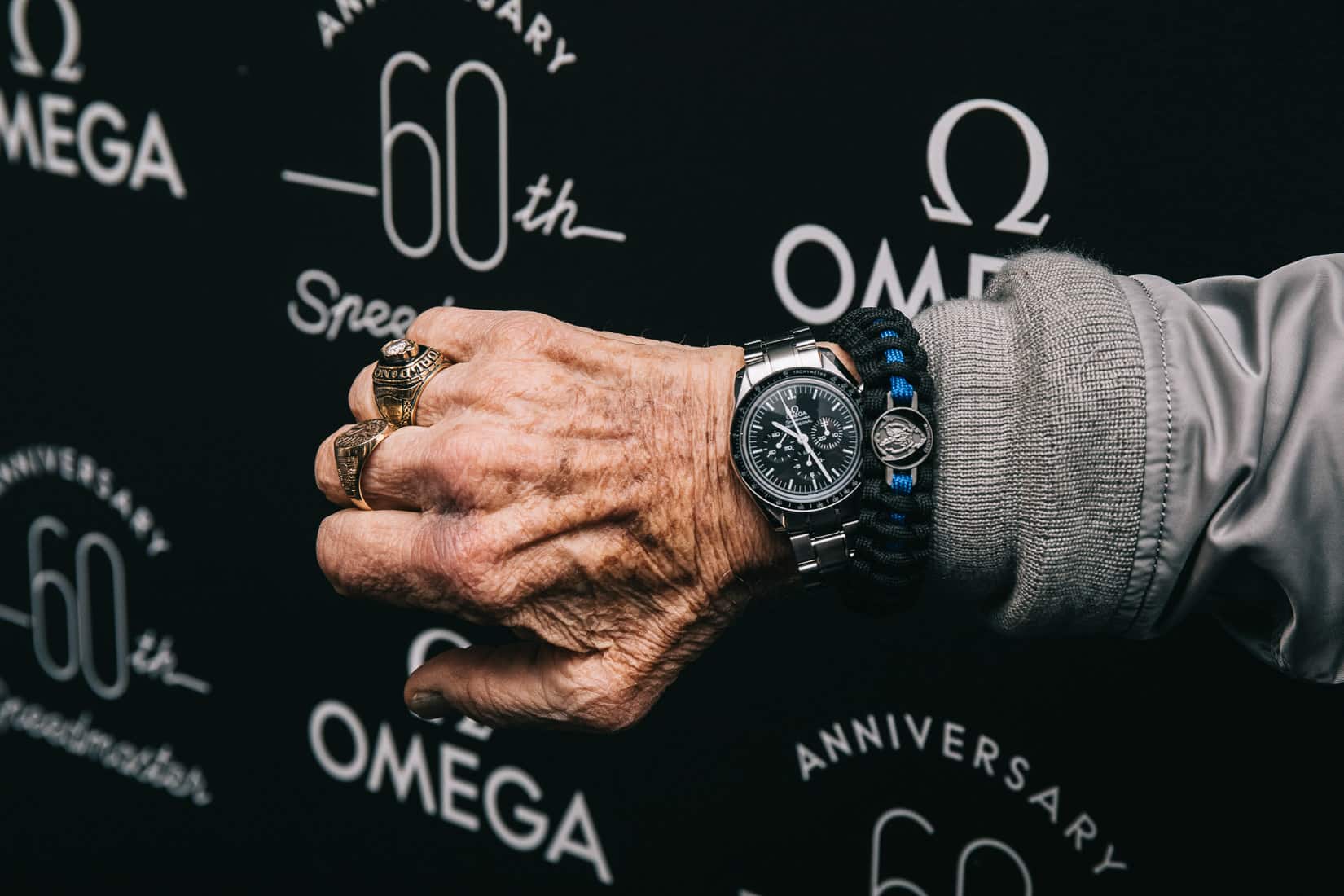 Astronaut Edwin “Buzz” Aldrin’s Speedmaster Professional on his wrist
Astronaut Edwin “Buzz” Aldrin’s Speedmaster Professional on his wrist11. Where is Buzz Aldrin’s Moon-worn Speedmaster?
I’ll wrap up this list of Speedmaster questions with one that keeps Speedy lovers’ minds turning. Buzz Aldrin was the first astronaut to wear his Omega Speedmaster on the surface of the Moon. He wore a Speedmaster Professional reference 105.012, to be precise. Former NASA engineer James Ragan, who was responsible for testing the astronauts’ cameras and Speedmasters, said that Buzz Aldrin supposedly donated his watch (with other equipment from the mission) to the Smithsonian. Alas, the watch never made it to its destination.
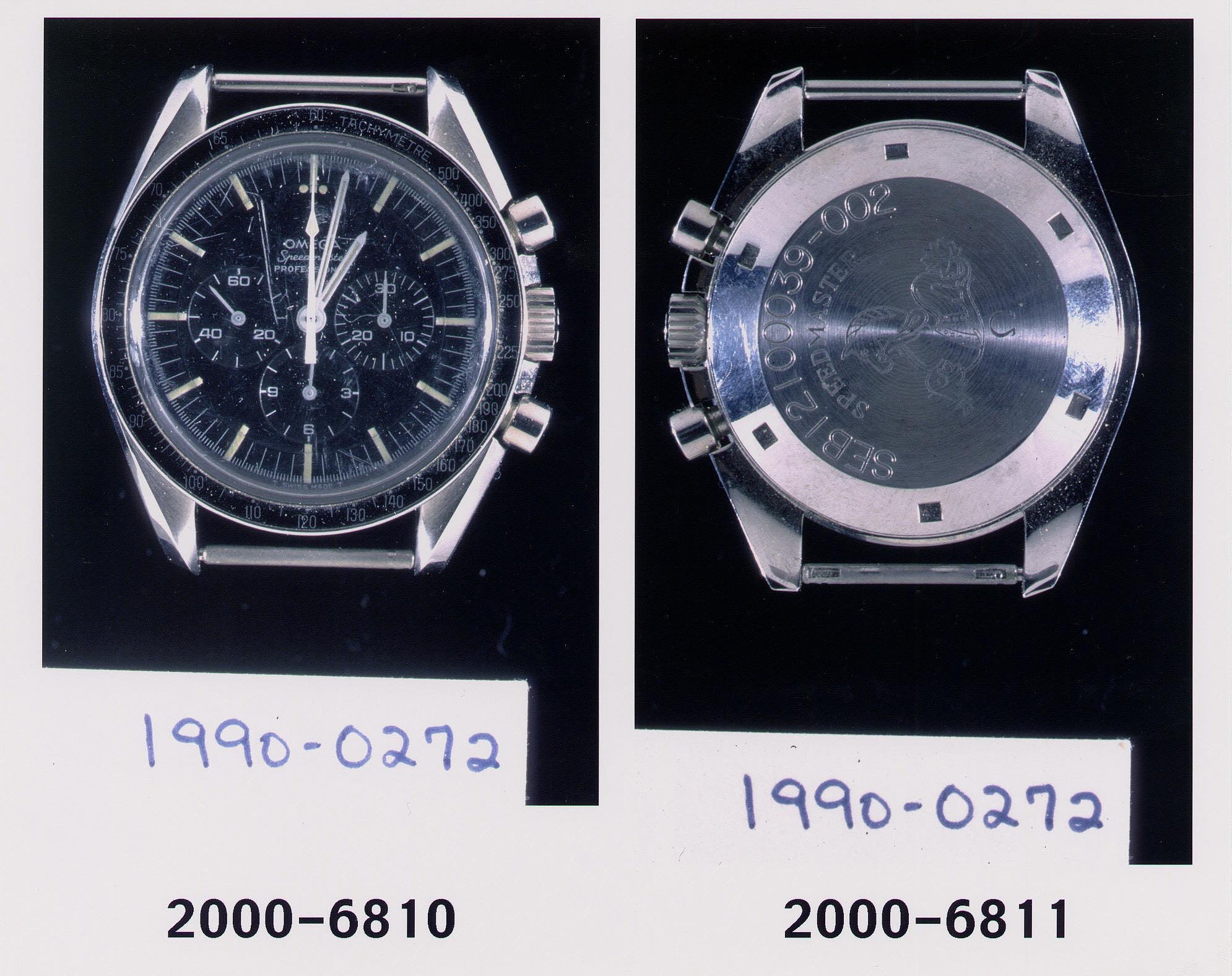 Collins’s Speedmaster 145.012-68 — Image: National Air and Space Museum
Collins’s Speedmaster 145.012-68 — Image: National Air and Space MuseumNeil Armstrong’s and Michael Collins’s Speedmasters (along with those of many other astronauts) are still around and classed as property of the US government. These flown Speedmaster watches can often be found on display in the Smithsonian National Air and Space Museum. Omega’s museum in Biel, Switzerland, also has several flown Speedmaster watches on display.
Would you like to know more about Speedmasters? Click here. Do you have specific Speedmaster questions that you’d like us to answer? Don’t hesitate to drop us a note.
*This article was first published on May 12th, 2020. It has since been updated with new images, answers, and facts.

